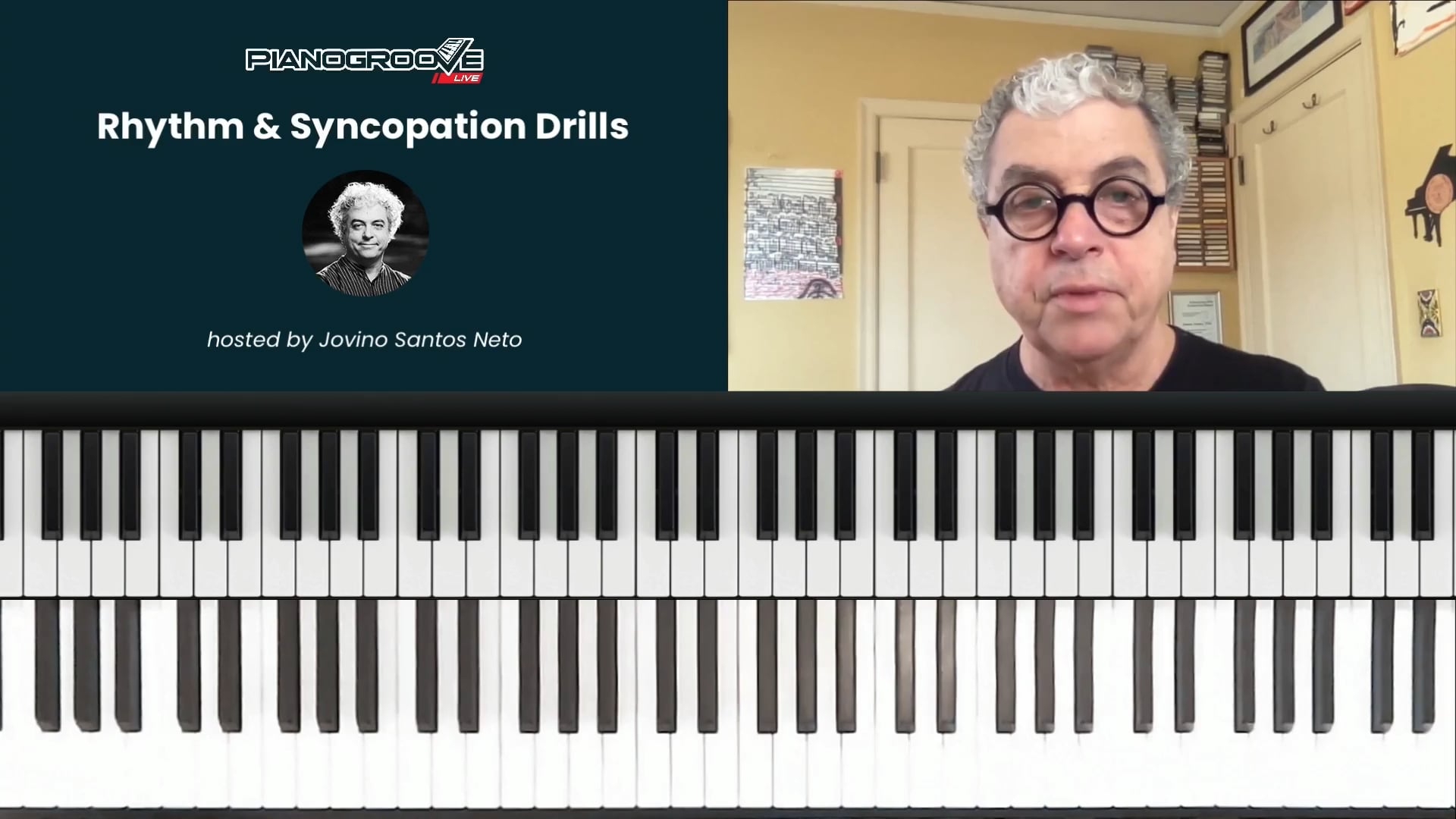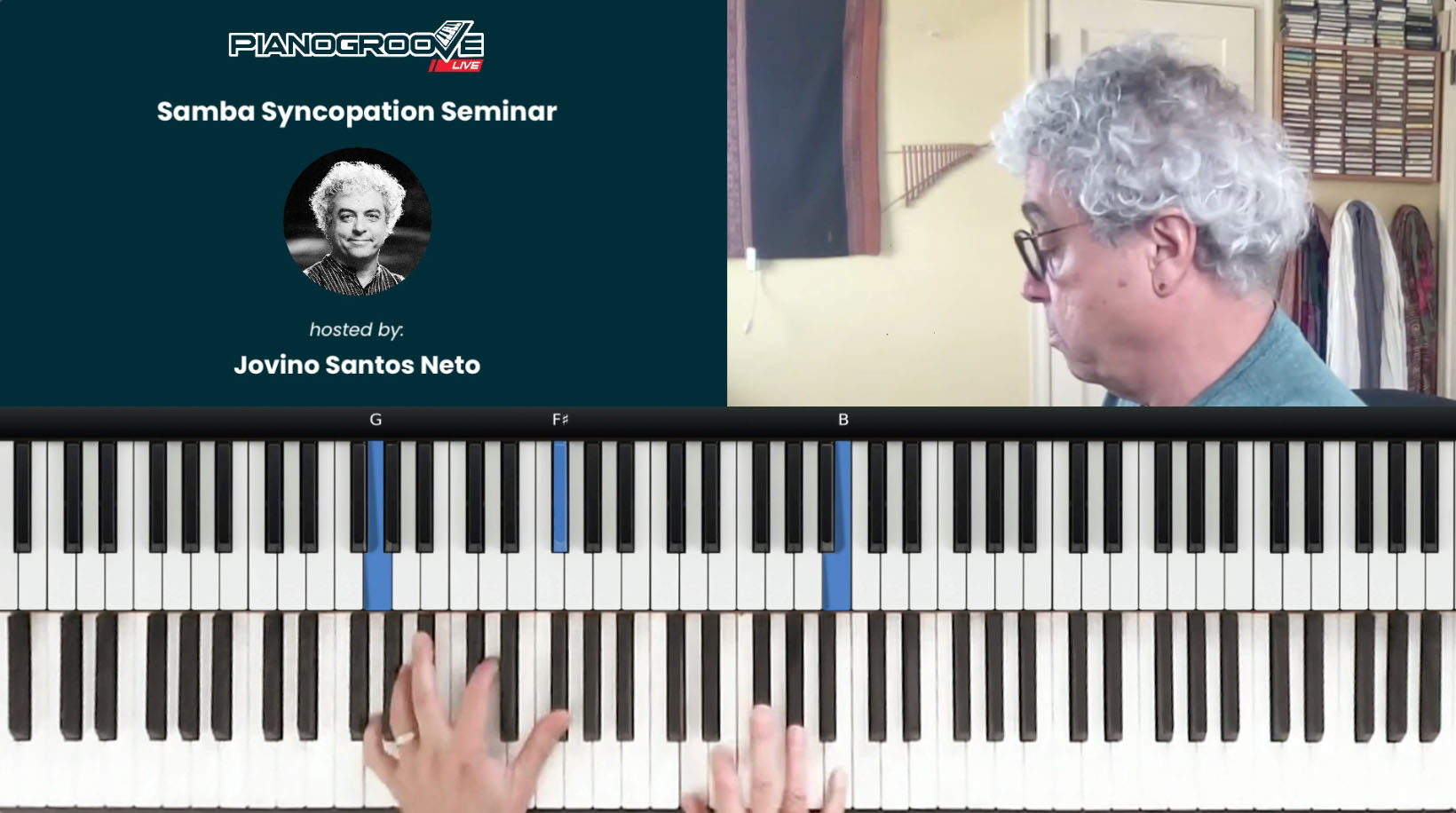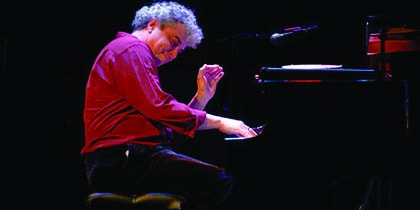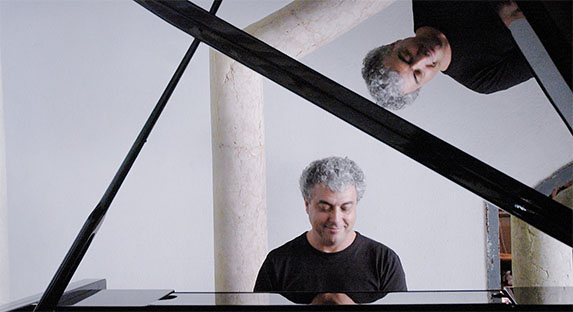

Jovino Santos Neto
Three-time Latin Grammy nominee Jovino Santos Neto, a master pianist, composer and arranger, is among the top Brazilian musicians working today.
Live Seminar Resources
Live Seminar Resources
PDF Downloads
- Rhythmic Vocabulary
Join PianoGroove Pro to access all downloads and learning resources.
Download theory supplements, midi files, chord changes and full note-for-note transcriptions of every lesson.
- Reading Brazilian Rhythms
Join PianoGroove Pro to access all downloads and learning resources.
Download theory supplements, midi files, chord changes and full note-for-note transcriptions of every lesson.
- Brazilian Groove Exampes
Join PianoGroove Pro to access all downloads and learning resources.
Download theory supplements, midi files, chord changes and full note-for-note transcriptions of every lesson.
Related Lessons
Forum Threads
Seminar Description
Seminar Description
Understanding Syncopation in Brazilian Piano Grooves
Welcome to this in-depth lesson on syncopation in Brazilian piano music. In this session, we explore the fundamental aspects of syncopation, focusing on its rhythmic placement, bodily connection, and application to popular Brazilian styles like samba and bossa nova.
Syncopation is one of the most challenging rhythmic concepts for many musicians. Unlike traditional rhythmic exercises that focus on counting and notation, syncopation requires an embodied understanding—feeling the groove in your body rather than just analyzing it intellectually.
What is Syncopation?
Syncopation occurs when accents and rhythmic attacks are placed on unexpected beats or subdivisions, creating a sense of movement and lift. Instead of emphasizing the strong beats (1, 2, 3, and 4), syncopated rhythms accentuate the "offbeats," giving the music a distinct bounce and groove.
To fully grasp syncopation, we must understand the foundational pulse of the music. In Brazilian styles, rhythm is often built upon multiple layers—each representing different subdivisions of the beat. The key is learning to internalize these rhythmic layers while maintaining a steady pulse.
The Importance of Body Movement
A crucial aspect of playing syncopated rhythms is engaging the body. Syncopation is not something that can be fully understood through sheet music alone—it must be felt.
Steps to Develop Your Rhythmic Awareness:
- Tap Your Foot: Keeping a steady quarter-note pulse with your foot while playing syncopated rhythms helps anchor your sense of time.
- Use Rotational Wrist Movements: Instead of stiff finger actions, use a natural wrist rotation to articulate syncopated notes smoothly.
- Visualize the Beat as a Dance: Many Brazilian rhythms are deeply connected to dance forms, so imagine how your playing would translate to movement.
Essential Syncopated Rhythms
1. Eighth-Note Subdivisions
Understanding how to divide the beat into two equal parts is the first step toward syncopation. Practice tapping your foot on the quarter notes while clapping or playing the offbeats.
2. The "Fork" Rhythm
One of the essential syncopated figures in Brazilian music is the 16th-note grouping known as the "fork" rhythm. This rhythm consists of:
- A 16th note
- An 8th note
- Another 16th note
It creates a characteristic push-and-pull effect that gives Brazilian music its unique groove.
3. Syncopated Left-Hand Comping
In Brazilian piano styles, the left hand often plays syncopated bass patterns that complement the right-hand melody. One common groove is:
- Playing the bass note on beat 1
- Syncopating the chord stabs between beats 2 and 4
Try practicing a simple progression like Cmaj7 to D7 to G7 using this approach.
4. Applying Syncopation to Samba
Samba grooves emphasize strong downbeats in the bass while layering syncopated rhythms in the melody and chordal accompaniment. A simple left-hand samba pattern might follow a "1-and, 2, 3-and, 4" rhythm, while the right hand adds syncopated melodic phrases.
5. The Relationship Between Groove and Pulse
A well-played syncopated rhythm does not disrupt the groove—it enhances it. The key is to internalize the pulse so that syncopated notes feel natural rather than forced.
Applying Syncopation to Improvisation
Once you have developed a strong foundation in syncopation, you can incorporate it into your improvisation. One effective exercise is to:
- Play a C major scale in quarter notes while keeping a steady left-hand groove.
- Introduce syncopated phrasing by using offbeat accents, triplets, and rhythmic variations.
- Experiment with different subdivisions (8th notes, 16th notes, and syncopated rests) to create a more dynamic feel.
A great way to develop your improvisational syncopation is to listen to Brazilian pianists like Ernesto Nazareth or Hermeto Pascoal, whose playing is deeply rooted in rhythmic expression.
Practice Tips for Mastering Syncopation
- Tap Your Foot on the Beat – This helps maintain a steady pulse while playing syncopated rhythms.
- Practice Hands Separately – Work on the left-hand groove independently before adding syncopated right-hand phrases.
- Use Vocalization – Scat singing or verbalizing rhythms can help internalize syncopation before playing it on the piano.
- Play with a Metronome – Set the metronome to emphasize different subdivisions (e.g., clicking on offbeats) to refine your rhythmic accuracy.
- Transcribe Rhythms from Recordings – Listening and playing along with Brazilian music will develop your ability to hear and feel syncopation naturally.
Conclusion
Syncopation is at the heart of Brazilian piano music, adding depth, movement, and excitement to your playing. By incorporating rhythmic awareness, body movement, and structured practice techniques, you will develop a strong sense of groove and feel comfortable navigating syncopated passages.
Continue exploring Brazilian music, experiment with different rhythmic layers, and most importantly—feel the rhythm in your body. Happy practicing! 🎶







Thank you so much for this seminar. The thing I struggle with the most I think is playing different rhythms in each hand. I thought Jovino’s ideas and suggestions were some of the best I have seen. I love his style. A great teacher.
Thank you!
Brian
Thanks Brian – I have just added the light-up keyboard to better review the exercises.
We will also add some of the rhythmic notation from the PDF files into the seminar with blue highlights.
Talk soon,
Hayden
Wonderful lesson. Thank you Jovino! Great explanation. so much to work on and explore. Agree with Brian’s comments Just one small thing… the Piano is quite quiet (compared to your voice)
Hey Sophie 👋
I’m glad you enjoyed the session.
I have fixed the audio issue, and also added the light-up keyboard.
The audio was just playing out of the left speaker, and not both, so hopefully it should be much better for you now.
Please let me know if I can be of further assistance.
Talk soon,
Hayden